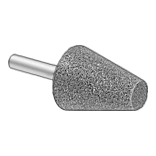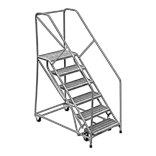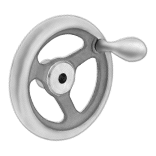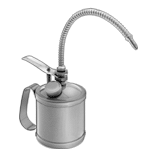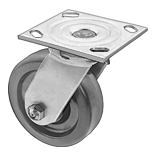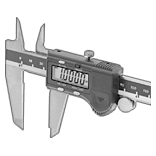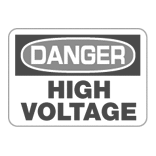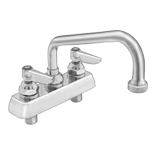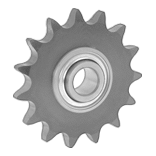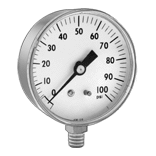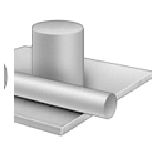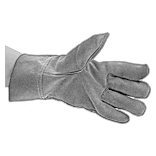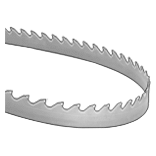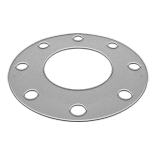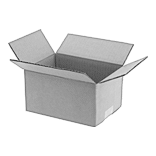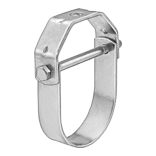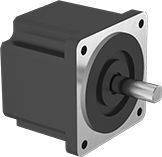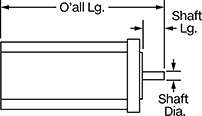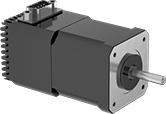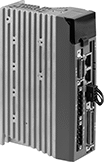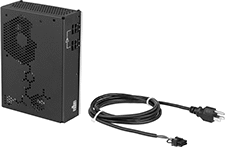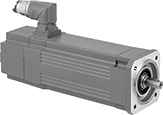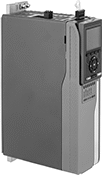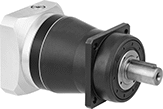Filter by
Maximum Holding Torque
Maximum Rotation Speed
Mounting Position
Body Shape
Component
Direction of Operation
Thrust Load Capacity
Overall Length
Number of Shafts
Weight
Radial Load Capacity
Face Shape
DFARS Specialty Metals
Export Control Classification Number (ECCN)
Stepper Motors
Motors
Overall | Shaft | Temp. Range, ° F | |||||||||||||||||||||||||||||||||||||||||||||||||||||||||||||||||||||||||||||||||||||||||||||||||
|---|---|---|---|---|---|---|---|---|---|---|---|---|---|---|---|---|---|---|---|---|---|---|---|---|---|---|---|---|---|---|---|---|---|---|---|---|---|---|---|---|---|---|---|---|---|---|---|---|---|---|---|---|---|---|---|---|---|---|---|---|---|---|---|---|---|---|---|---|---|---|---|---|---|---|---|---|---|---|---|---|---|---|---|---|---|---|---|---|---|---|---|---|---|---|---|---|---|---|---|
Max. Holding Torque, in·ozf | Max. Rotation Speed, rpm | Max. Current per Phase, amp | Full Step Increment | Stepper Motor Polarity | No. of Wire Leads | Lg. | Wd. | Ht. | Dia. | Lg. | Ctr.-to-Base Lg. | Type | No. of Shafts | Min. | Max. | Each | |||||||||||||||||||||||||||||||||||||||||||||||||||||||||||||||||||||||||||||||||||
Square Body | |||||||||||||||||||||||||||||||||||||||||||||||||||||||||||||||||||||||||||||||||||||||||||||||||||
NEMA 34 Frame Size | |||||||||||||||||||||||||||||||||||||||||||||||||||||||||||||||||||||||||||||||||||||||||||||||||||
| 467 | 2,700 | 7 | 1.8° | Bipolar | 8 | 3.8" | 3.4" | 3.4" | 1/2" | 1 1/4" | 1.69" | Keyed | 1 | 0 | 120 | 00000000 | 0000000 | ||||||||||||||||||||||||||||||||||||||||||||||||||||||||||||||||||||||||||||||||||
| 637 | 2,700 | 8.6 | 1.8° | Bipolar | 8 | 4.4" | 3.4" | 3.4" | 1/2" | 1 1/4" | 1.69" | Keyed | 1 | 0 | 120 | 00000000 | 000000 | ||||||||||||||||||||||||||||||||||||||||||||||||||||||||||||||||||||||||||||||||||
| 1,200 | 2,700 | 9.8 | 1.8° | Bipolar | 8 | 5.9" | 3.4" | 3.4" | 1/2" | 1 1/4" | 1.69" | Keyed | 1 | 0 | 120 | 00000000 | 000000 | ||||||||||||||||||||||||||||||||||||||||||||||||||||||||||||||||||||||||||||||||||
| 1,700 | 1,500 | 10 | 1.8° | Bipolar | 8 | 7.4" | 3.4" | 3.4" | 5/8" | 1 1/4" | 1.69" | Keyed | 1 | 0 | 120 | 00000000 | 000000 | ||||||||||||||||||||||||||||||||||||||||||||||||||||||||||||||||||||||||||||||||||
| 2,124.1 | 360 | 5 | 1.8° | Bipolar | 4 | 7.4" | 3.4" | 3.4" | 5/8" | 1" | 1.7" | Keyed | 1 | 0 | 120 | 00000000 | 000000 | ||||||||||||||||||||||||||||||||||||||||||||||||||||||||||||||||||||||||||||||||||
NEMA 42 Frame Size | |||||||||||||||||||||||||||||||||||||||||||||||||||||||||||||||||||||||||||||||||||||||||||||||||||
| 3,155.4 | 225 | 12 | 1.8° | Bipolar | 8 | 8.1" | 4.3" | 4.3" | 3/4" | 2 1/8" | 2.17" | Keyed | 1 | 0 | 120 | 00000000 | 000000 | ||||||||||||||||||||||||||||||||||||||||||||||||||||||||||||||||||||||||||||||||||
| 4,531.5 | 160 | 16 | 1.8° | Bipolar | 8 | 10.1" | 4.3" | 4.3" | 3/4" | 2 1/8" | 2.17" | Keyed | 1 | 0 | 120 | 00000000 | 000000 | ||||||||||||||||||||||||||||||||||||||||||||||||||||||||||||||||||||||||||||||||||
Motor/Drives
Current per Phase, amp | Overall | Shaft | Temp. Range, ° F | ||||||||||||||||||||||||||||||||||||||||||||||||||||||||||||||||||||||||||||||||||||||||||||||||
|---|---|---|---|---|---|---|---|---|---|---|---|---|---|---|---|---|---|---|---|---|---|---|---|---|---|---|---|---|---|---|---|---|---|---|---|---|---|---|---|---|---|---|---|---|---|---|---|---|---|---|---|---|---|---|---|---|---|---|---|---|---|---|---|---|---|---|---|---|---|---|---|---|---|---|---|---|---|---|---|---|---|---|---|---|---|---|---|---|---|---|---|---|---|---|---|---|---|---|---|
Max. Holding Torque, in·ozf | Max. Rotation Speed, rpm | Min. | Max. | Voltage, V DC | Full Step Increment | Step Resolution | Stepper Motor Polarity | Lg. | Wd. | Ht. | Dia. | Lg. | Ctr.-to-Base Lg. | Type | Min. | Max. | Each | ||||||||||||||||||||||||||||||||||||||||||||||||||||||||||||||||||||||||||||||||||
Square Body | |||||||||||||||||||||||||||||||||||||||||||||||||||||||||||||||||||||||||||||||||||||||||||||||||||
NEMA 34 Frame Size | |||||||||||||||||||||||||||||||||||||||||||||||||||||||||||||||||||||||||||||||||||||||||||||||||||
| 637 | 1,500 | 0.43 | 4.3 | 20 to 80 | 1.8° | 1 | Bipolar | 6.6" | 3.5" | 3.5" | 1/2" | 1 3/16" | 1.76" | Keyed | 0 | 120 | 00000000 | 0000000 | |||||||||||||||||||||||||||||||||||||||||||||||||||||||||||||||||||||||||||||||||
| 1,200 | 3,000 | 0.49 | 4.9 | 20 to 80 | 1.8° | 1 | Bipolar | 8.1" | 3.5" | 3.5" | 1/2" | 1 3/16" | 1.76" | Keyed | 0 | 120 | 00000000 | 000000 | |||||||||||||||||||||||||||||||||||||||||||||||||||||||||||||||||||||||||||||||||
| 1,700 | 1,800 | 0.5 | 5 | 20 to 80 | 1.8° | 1 | Bipolar | 9.6" | 3.5" | 3.5" | 5/8" | 1 3/16" | 1.76" | Keyed | 0 | 120 | 00000000 | 000000 | |||||||||||||||||||||||||||||||||||||||||||||||||||||||||||||||||||||||||||||||||
Stepper Gearmotors
 |
Square Body |
Overall | Shaft | Keyway, mm | |||||||||||||||||||||||||||||||||||||||||||||||||||||||||||||||||||||||||||||||||||||||||||||||||
|---|---|---|---|---|---|---|---|---|---|---|---|---|---|---|---|---|---|---|---|---|---|---|---|---|---|---|---|---|---|---|---|---|---|---|---|---|---|---|---|---|---|---|---|---|---|---|---|---|---|---|---|---|---|---|---|---|---|---|---|---|---|---|---|---|---|---|---|---|---|---|---|---|---|---|---|---|---|---|---|---|---|---|---|---|---|---|---|---|---|---|---|---|---|---|---|---|---|---|---|
Max. Holding Torque, in·ozf | Max. Rotation Speed, rpm | Max. Current per Phase, amp | Full Step Increment | No. of Wire Leads | Lg. | Wd. | Ht. | Dia., mm | Lg., mm | Ctr.-to-Base Lg. | Type | Key Included | Lg. | Wd. | Dp. | Temp. Range, ° F | Each | ||||||||||||||||||||||||||||||||||||||||||||||||||||||||||||||||||||||||||||||||||
Square Body | |||||||||||||||||||||||||||||||||||||||||||||||||||||||||||||||||||||||||||||||||||||||||||||||||||
NEMA 34 Frame Size | |||||||||||||||||||||||||||||||||||||||||||||||||||||||||||||||||||||||||||||||||||||||||||||||||||
| 3,058 | 400 | 3.5 | 0.36° | 4 | 8.5" | 3.5" | 3.5" | 22 | 37.5 | 1.77" | Keyed | No | 30 | 6 | 3.5 | 0 to 120 | 0000000 | 0000000 | |||||||||||||||||||||||||||||||||||||||||||||||||||||||||||||||||||||||||||||||||
| 6,117 | 200 | 3.5 | 0.18° | 4 | 8.5" | 3.5" | 3.5" | 22 | 37.5 | 1.77" | Keyed | No | 30 | 6 | 3.5 | 0 to 120 | 0000000 | 000000 | |||||||||||||||||||||||||||||||||||||||||||||||||||||||||||||||||||||||||||||||||
| 11,555 | 100 | 3.5 | 0.09° | 4 | 8.5" | 3.5" | 3.5" | 22 | 37.5 | 1.77" | Keyed | No | 30 | 6 | 3.5 | 0 to 120 | 0000000 | 000000 | |||||||||||||||||||||||||||||||||||||||||||||||||||||||||||||||||||||||||||||||||
| 28,888 | 40 | 3.5 | 0.036° | 4 | 8.5" | 3.5" | 3.5" | 22 | 37.5 | 1.77" | Keyed | No | 30 | 6 | 3.5 | 0 to 120 | 0000000 | 000000 | |||||||||||||||||||||||||||||||||||||||||||||||||||||||||||||||||||||||||||||||||
Stepper Motors with Integrated Motion Control
Current per Phase, amp | Overall | Shaft | Temp. Range, ° F | ||||||||||||||||||||||||||||||||||||||||||||||||||||||||||||||||||||||||||||||||||||||||||||||||
|---|---|---|---|---|---|---|---|---|---|---|---|---|---|---|---|---|---|---|---|---|---|---|---|---|---|---|---|---|---|---|---|---|---|---|---|---|---|---|---|---|---|---|---|---|---|---|---|---|---|---|---|---|---|---|---|---|---|---|---|---|---|---|---|---|---|---|---|---|---|---|---|---|---|---|---|---|---|---|---|---|---|---|---|---|---|---|---|---|---|---|---|---|---|---|---|---|---|---|---|
Max. Holding Torque, in·ozf | Max. Rotation Speed, rpm | Min. | Max. | Voltage, V DC | Full Step Increment | Step Resolution | No. of Inputs/Outputs | Lg. | Wd. | Ht. | Dia. | Lg. | Ctr.-to-Base Lg. | Type | Min. | Max. | Each | ||||||||||||||||||||||||||||||||||||||||||||||||||||||||||||||||||||||||||||||||||
Motor/Controller/Drives | |||||||||||||||||||||||||||||||||||||||||||||||||||||||||||||||||||||||||||||||||||||||||||||||||||
NEMA 34 Frame Size | |||||||||||||||||||||||||||||||||||||||||||||||||||||||||||||||||||||||||||||||||||||||||||||||||||
| 637 | 1,500 | 0.43 | 4.3 | 20 to 80 | 1.8° | 1/10 | 2 Digital-Inputs, 1 Digital-Output | 6.6" | 3.5" | 3.5" | 1/2" | 1 1/4" | 1.76" | Keyed | 0 | 120 | 00000000 | 0000000 | |||||||||||||||||||||||||||||||||||||||||||||||||||||||||||||||||||||||||||||||||
| 1,200 | 3,000 | 0.49 | 4.9 | 20 to 80 | 1.8° | 1/10 | 2 Digital-Inputs, 1 Digital-Output | 8.2" | 3.5" | 3.5" | 1/2" | 1 1/4" | 1.76" | Keyed | 0 | 120 | 00000000 | 000000 | |||||||||||||||||||||||||||||||||||||||||||||||||||||||||||||||||||||||||||||||||
| 1,700 | 1,800 | 0.5 | 5 | 20 to 80 | 1.8° | 1/10 | 2 Digital-Inputs, 1 Digital-Output | 9.6" | 3.5" | 3.5" | 5/8" | 1 1/4" | 1.76" | Keyed | 0 | 120 | 00000000 | 000000 | |||||||||||||||||||||||||||||||||||||||||||||||||||||||||||||||||||||||||||||||||
DC Servomotors
Servomotors | Servomotor Encoder Cords | Servomotor Power Cords | |||||||||||||||||||||||||||||||||||||||||||||||||||||||||||||||||||||||||||||||||||||||||||||||||
|---|---|---|---|---|---|---|---|---|---|---|---|---|---|---|---|---|---|---|---|---|---|---|---|---|---|---|---|---|---|---|---|---|---|---|---|---|---|---|---|---|---|---|---|---|---|---|---|---|---|---|---|---|---|---|---|---|---|---|---|---|---|---|---|---|---|---|---|---|---|---|---|---|---|---|---|---|---|---|---|---|---|---|---|---|---|---|---|---|---|---|---|---|---|---|---|---|---|---|---|
Shaft | |||||||||||||||||||||||||||||||||||||||||||||||||||||||||||||||||||||||||||||||||||||||||||||||||||
Motor Frame Size | Max. Torque, in·lbf | Continuous Torque, in·lbf | Max. Rotation Speed, rpm | Current, amp | Max. Current, amp | Wattage, W | Voltage, V DC | Dia. | Lg. | No. of Counts per Rev. | Enclosure Rating | Each | Each | Each | |||||||||||||||||||||||||||||||||||||||||||||||||||||||||||||||||||||||||||||||||||||
Without Brake | |||||||||||||||||||||||||||||||||||||||||||||||||||||||||||||||||||||||||||||||||||||||||||||||||||
| NEMA 23 | 10 | 3.1 | 4,960 | 2.1 | 6.6 | 180 | 340 | 3/8" | 1.2" | 20,000 | — | 0000000 | 000000000 | 00000000 | 0000000 | 00000000 | 0000000 | ||||||||||||||||||||||||||||||||||||||||||||||||||||||||||||||||||||||||||||||||||
| NEMA 23 | 18 | 5.5 | 4,960 | 1.8 | 5.8 | 320 | 340 | 3/8" | 1.2" | 20,000 | — | 0000000 | 00000000 | 00000000 | 000000 | 00000000 | 000000 | ||||||||||||||||||||||||||||||||||||||||||||||||||||||||||||||||||||||||||||||||||
| NEMA 23 | 29.6 | 8.8 | 4,960 | 1.8 | 5.9 | 500 | 340 | 3/8" | 1.2" | 20,000 | — | 0000000 | 00000000 | 00000000 | 000000 | 00000000 | 000000 | ||||||||||||||||||||||||||||||||||||||||||||||||||||||||||||||||||||||||||||||||||
| NEMA 23 | 38.8 | 11.8 | 3,740 | 1.6 | 5.3 | 520 | 340 | 3/8" | 1.2" | 20,000 | — | 0000000 | 00000000 | 00000000 | 000000 | 00000000 | 000000 | ||||||||||||||||||||||||||||||||||||||||||||||||||||||||||||||||||||||||||||||||||
| NEMA 34 | 45 | 12.8 | 4,960 | 3.2 | 10.9 | 750 | 340 | 1/2" | 1.1" | 20,000 | — | 0000000 | 00000000 | 00000000 | 000000 | 00000000 | 000000 | ||||||||||||||||||||||||||||||||||||||||||||||||||||||||||||||||||||||||||||||||||
| NEMA 34 | 75.9 | 20.7 | 4,960 | 4.1 | 14.5 | 1,210 | 340 | 1/2" | 1.1" | 20,000 | — | 0000000 | 00000000 | 00000000 | 000000 | 00000000 | 000000 | ||||||||||||||||||||||||||||||||||||||||||||||||||||||||||||||||||||||||||||||||||
| NEMA 34 | 106.7 | 27.3 | 4,960 | 5.5 | 21.1 | 1,600 | 340 | 1/2" | 1.1" | 20,000 | — | 0000000 | 00000000 | 00000000 | 000000 | 00000000 | 000000 | ||||||||||||||||||||||||||||||||||||||||||||||||||||||||||||||||||||||||||||||||||
| NEMA 34 | 129.5 | 38.3 | 2,980 | 5.8 | 19.2 | 1,350 | 340 | 1/2" | 1.1" | 20,000 | — | 0000000 | 00000000 | 00000000 | 000000 | 00000000 | 000000 | ||||||||||||||||||||||||||||||||||||||||||||||||||||||||||||||||||||||||||||||||||
| 40 mm | 8.5 | 2.8 | 2,900 | 5.2 | 15.6 | 100 | 24 | 8 mm | 22.5 mm | 10,000 | IP65 | 0000000 | 000000 | 00000000 | 000000 | 00000000 | 000000 | ||||||||||||||||||||||||||||||||||||||||||||||||||||||||||||||||||||||||||||||||||
| 60 mm | 16.8 | 5.7 | 3,000 | 5.2 | 15.6 | 200 | 48 | 14 mm | 27 mm | 10,000 | IP65 | 0000000 | 000000 | 00000000 | 000000 | 00000000 | 000000 | ||||||||||||||||||||||||||||||||||||||||||||||||||||||||||||||||||||||||||||||||||
| 60 mm | 33.6 | 11.2 | 2,500 | 6.9 | 20.7 | 400 | 60 | 14 mm | 27 mm | 10,000 | IP65 | 0000000 | 000000 | 00000000 | 000000 | 00000000 | 000000 | ||||||||||||||||||||||||||||||||||||||||||||||||||||||||||||||||||||||||||||||||||
| 60 mm | 33.6 | 11.2 | 3,000 | 12 | 36 | 400 | 48 | 14 mm | 27 mm | 10,000 | IP65 | 0000000 | 000000 | 00000000 | 000000 | 00000000 | 000000 | ||||||||||||||||||||||||||||||||||||||||||||||||||||||||||||||||||||||||||||||||||
| 80 mm | 61.1 | 21.2 | 3,000 | 22.5 | 56 | 750 | 48 | 19 mm | 37 mm | 10,000 | IP65 | 0000000 | 000000 | 00000000 | 000000 | 00000000 | 000000 | ||||||||||||||||||||||||||||||||||||||||||||||||||||||||||||||||||||||||||||||||||
With Brake | |||||||||||||||||||||||||||||||||||||||||||||||||||||||||||||||||||||||||||||||||||||||||||||||||||
| NEMA 23 | 10 | 3.1 | 4,960 | 2.1 | 6.6 | 180 | 340 | 3/8" | 1.2" | 20,000 | — | 0000000 | 00000000 | 00000000 | 000000 | 00000000 | 000000 | ||||||||||||||||||||||||||||||||||||||||||||||||||||||||||||||||||||||||||||||||||
| NEMA 23 | 18 | 5.5 | 4,960 | 1.8 | 5.8 | 320 | 340 | 3/8" | 1.2" | 20,000 | — | 0000000 | 00000000 | 00000000 | 000000 | 00000000 | 000000 | ||||||||||||||||||||||||||||||||||||||||||||||||||||||||||||||||||||||||||||||||||
| NEMA 23 | 29.6 | 8.8 | 4,960 | 1.8 | 5.9 | 500 | 340 | 3/8" | 1.2" | 20,000 | — | 0000000 | 00000000 | 00000000 | 000000 | 00000000 | 000000 | ||||||||||||||||||||||||||||||||||||||||||||||||||||||||||||||||||||||||||||||||||
| NEMA 23 | 38.8 | 11.8 | 3,740 | 1.6 | 5.3 | 520 | 340 | 3/8" | 1.2" | 20,000 | — | 0000000 | 00000000 | 00000000 | 000000 | 00000000 | 000000 | ||||||||||||||||||||||||||||||||||||||||||||||||||||||||||||||||||||||||||||||||||
| NEMA 34 | 45 | 12.8 | 4,960 | 3.2 | 10.9 | 750 | 340 | 1/2" | 1.1" | 20,000 | — | 0000000 | 00000000 | 00000000 | 000000 | 00000000 | 000000 | ||||||||||||||||||||||||||||||||||||||||||||||||||||||||||||||||||||||||||||||||||
| NEMA 34 | 75.9 | 20.7 | 4,960 | 4.1 | 14.5 | 1,210 | 340 | 1/2" | 1.1" | 20,000 | — | 0000000 | 00000000 | 00000000 | 000000 | 00000000 | 000000 | ||||||||||||||||||||||||||||||||||||||||||||||||||||||||||||||||||||||||||||||||||
| NEMA 34 | 106.7 | 27.3 | 4,960 | 5.5 | 21.1 | 1,600 | 340 | 1/2" | 1.1" | 20,000 | — | 0000000 | 00000000 | 00000000 | 000000 | 00000000 | 000000 | ||||||||||||||||||||||||||||||||||||||||||||||||||||||||||||||||||||||||||||||||||
| NEMA 34 | 129.5 | 38.3 | 2,980 | 5.8 | 19.2 | 1,350 | 340 | 1/2" | 1.1" | 20,000 | — | 0000000 | 00000000 | 00000000 | 000000 | 00000000 | 000000 | ||||||||||||||||||||||||||||||||||||||||||||||||||||||||||||||||||||||||||||||||||
DC Servomotors with Integrated Drive
Servomotors | Servomotor Input/Output Cords | Servomotor Power Cords | |||||||||||||||||||||||||||||||||||||||||||||||||||||||||||||||||||||||||||||||||||||||||||||||||
|---|---|---|---|---|---|---|---|---|---|---|---|---|---|---|---|---|---|---|---|---|---|---|---|---|---|---|---|---|---|---|---|---|---|---|---|---|---|---|---|---|---|---|---|---|---|---|---|---|---|---|---|---|---|---|---|---|---|---|---|---|---|---|---|---|---|---|---|---|---|---|---|---|---|---|---|---|---|---|---|---|---|---|---|---|---|---|---|---|---|---|---|---|---|---|---|---|---|---|---|
Overall | Shaft | ||||||||||||||||||||||||||||||||||||||||||||||||||||||||||||||||||||||||||||||||||||||||||||||||||
Max. Torque, in·lbf | Continuous Torque, in·lbf | Max. Rotation Speed, rpm | Wattage, W | Voltage, V DC | Lg. | Wd. | Ht. | Dia. | Lg. | No. of Counts per Rev. | Driver Control Mode | Enclosure Rating | Each | Each | Each | ||||||||||||||||||||||||||||||||||||||||||||||||||||||||||||||||||||||||||||||||||||
NEMA 23 Frame Size | |||||||||||||||||||||||||||||||||||||||||||||||||||||||||||||||||||||||||||||||||||||||||||||||||||
| 38.8 | 7.8 | 2,520 | 193 | 75 | 5.6" | 2.3" | 3.2" | 3/8" | 3/4" | 6,400 | Step and Direction | IP53 | 00000000 | 0000000 | 00000000 | 000000 | 00000000 | 000000 | |||||||||||||||||||||||||||||||||||||||||||||||||||||||||||||||||||||||||||||||||
| 51.8 | 10.4 | 1,860 | 213 | 75 | 6.4" | 2.3" | 3.2" | 3/8" | 3/4" | 6,400 | Step and Direction | IP53 | 00000000 | 000000 | 00000000 | 00000 | 00000000 | 00000 | |||||||||||||||||||||||||||||||||||||||||||||||||||||||||||||||||||||||||||||||||
NEMA 34 Frame Size | |||||||||||||||||||||||||||||||||||||||||||||||||||||||||||||||||||||||||||||||||||||||||||||||||||
| 39.9 | 9.4 | 2,320 | 220 | 75 | 4.4" | 3.4" | 4.3" | 1/2" | 1 3/16" | 6,400 | Step and Direction | IP53 | 00000000 | 000000 | 00000000 | 00000 | 00000000 | 00000 | |||||||||||||||||||||||||||||||||||||||||||||||||||||||||||||||||||||||||||||||||
| 68.4 | 18.1 | 1,410 | 227 | 75 | 5.1" | 3.4" | 4.3" | 1/2" | 1 3/16" | 6,400 | Step and Direction | IP53 | 00000000 | 000000 | 00000000 | 00000 | 00000000 | 00000 | |||||||||||||||||||||||||||||||||||||||||||||||||||||||||||||||||||||||||||||||||
| 87.3 | 24.5 | 1,130 | 267 | 75 | 5.9" | 3.4" | 4.3" | 1/2" | 1 3/16" | 6,400 | Step and Direction | IP53 | 00000000 | 000000 | 00000000 | 00000 | 00000000 | 00000 | |||||||||||||||||||||||||||||||||||||||||||||||||||||||||||||||||||||||||||||||||
| 115.3 | 30 | 840 | 280 | 75 | 6.6" | 3.4" | 4.3" | 1/2" | 1 3/16" | 6,400 | Step and Direction | IP53 | 00000000 | 000000 | 00000000 | 00000 | 00000000 | 00000 | |||||||||||||||||||||||||||||||||||||||||||||||||||||||||||||||||||||||||||||||||
AC Servomotors
Servomotors | Servomotor Power and Encoder Cords | ||||||||||||||||||||||||||||||||||||||||||||||||||||||||||||||||||||||||||||||||||||||||||||||||||
|---|---|---|---|---|---|---|---|---|---|---|---|---|---|---|---|---|---|---|---|---|---|---|---|---|---|---|---|---|---|---|---|---|---|---|---|---|---|---|---|---|---|---|---|---|---|---|---|---|---|---|---|---|---|---|---|---|---|---|---|---|---|---|---|---|---|---|---|---|---|---|---|---|---|---|---|---|---|---|---|---|---|---|---|---|---|---|---|---|---|---|---|---|---|---|---|---|---|---|---|
Shaft, mm | |||||||||||||||||||||||||||||||||||||||||||||||||||||||||||||||||||||||||||||||||||||||||||||||||||
Motor Frame Size | Max. Torque, in·lbf | Continuous Torque, in·lbf | Max. Rotation Speed, rpm | Current, amp | Max. Current, amp | Power, hp | Wattage, W | Dia. | Lg. | Ctr.-to-Base Lg. | No. of Counts per Rev. | Enclosure Rating | Each | Each | |||||||||||||||||||||||||||||||||||||||||||||||||||||||||||||||||||||||||||||||||||||
230V AC, Three Phase | |||||||||||||||||||||||||||||||||||||||||||||||||||||||||||||||||||||||||||||||||||||||||||||||||||
| 73 mm | 35.5 | 10.7 | 4,500 | 2.29 | 13.8 | 1/2 | 400 | 11 | 23 | 36.5 | 4,096 | IP65 | 00000000 | 000000000 | 00000000 | 0000000 | |||||||||||||||||||||||||||||||||||||||||||||||||||||||||||||||||||||||||||||||||||
| 73 mm | 65.5 | 17.7 | 4,500 | 4.03 | 24 | 1 | 680 | 11 | 23 | 36.5 | 4,096 | IP65 | 00000000 | 00000000 | 00000000 | 000000 | |||||||||||||||||||||||||||||||||||||||||||||||||||||||||||||||||||||||||||||||||||
| 88 mm | 80 | 22.2 | 4,500 | 5.25 | 31.5 | 1 | 850 | 14 | 30 | 44 | 4,096 | IP65 | 00000000 | 00000000 | 00000000 | 000000 | |||||||||||||||||||||||||||||||||||||||||||||||||||||||||||||||||||||||||||||||||||
| 88 mm | 132.7 | 39.2 | 4,500 | 9.78 | 59 | 2 | 1,500 | 14 | 30 | 44 | 4,096 | IP65 | 00000000 | 00000000 | 00000000 | 000000 | |||||||||||||||||||||||||||||||||||||||||||||||||||||||||||||||||||||||||||||||||||
400V AC, Three Phase | |||||||||||||||||||||||||||||||||||||||||||||||||||||||||||||||||||||||||||||||||||||||||||||||||||
| 73 mm | 35.9 | 10.7 | 4,500 | 1.32 | 7 | 1/2 | 400 | 11 | 23 | 36.5 | 4,096 | IP65 | 00000000 | 00000000 | 00000000 | 000000 | |||||||||||||||||||||||||||||||||||||||||||||||||||||||||||||||||||||||||||||||||||
| 73 mm | 67.3 | 17.7 | 4,500 | 2.3 | 13.1 | 1 | 680 | 11 | 23 | 36.5 | 4,096 | IP65 | 00000000 | 00000000 | 00000000 | 000000 | |||||||||||||||||||||||||||||||||||||||||||||||||||||||||||||||||||||||||||||||||||
| 88 mm | 87.4 | 22.2 | 4,500 | 3.05 | 18.3 | 1 | 850 | 14 | 30 | 44 | 4,096 | IP65 | 00000000 | 00000000 | 00000000 | 000000 | |||||||||||||||||||||||||||||||||||||||||||||||||||||||||||||||||||||||||||||||||||
| 88 mm | 138.9 | 39.2 | 4,500 | 5.4 | 32.5 | 2 | 1,500 | 14 | 30 | 44 | 4,096 | IP65 | 00000000 | 00000000 | 00000000 | 000000 | |||||||||||||||||||||||||||||||||||||||||||||||||||||||||||||||||||||||||||||||||||
| 116 mm | 156.6 | 51.9 | 3,000 | 4.9 | 25 | 2 | 1,800 | 24 | 50 | 58 | 4,096 | IP65 | 00000000 | 00000000 | 00000000 | 000000 | |||||||||||||||||||||||||||||||||||||||||||||||||||||||||||||||||||||||||||||||||||
| 116 mm | 218.6 | 72.7 | 3,000 | 7.5 | 39 | 3 1/2 | 2,600 | 24 | 50 | 58 | 4,096 | IP65 | 00000000 | 00000000 | 00000000 | 000000 | |||||||||||||||||||||||||||||||||||||||||||||||||||||||||||||||||||||||||||||||||||
